







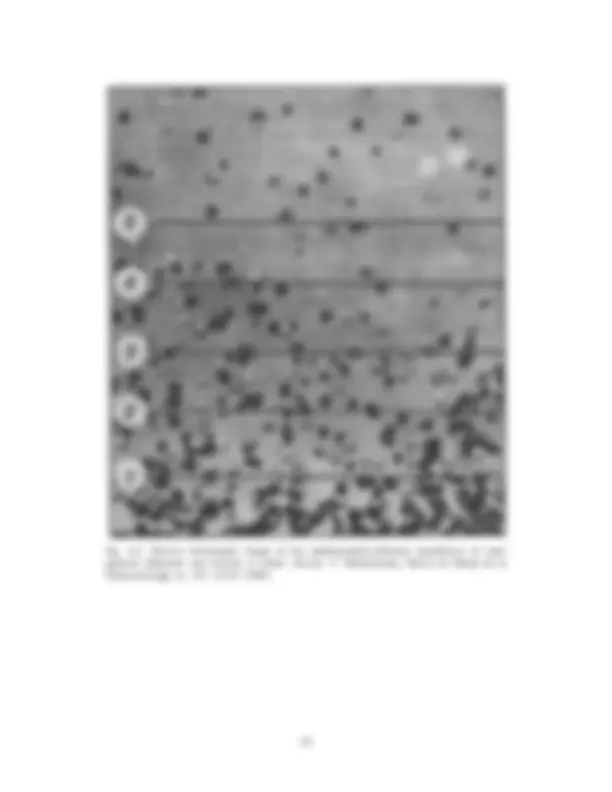


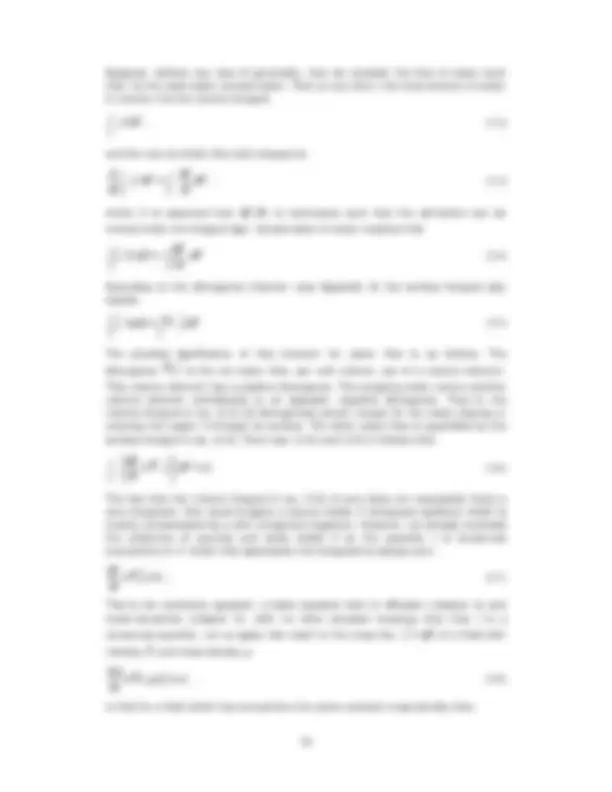



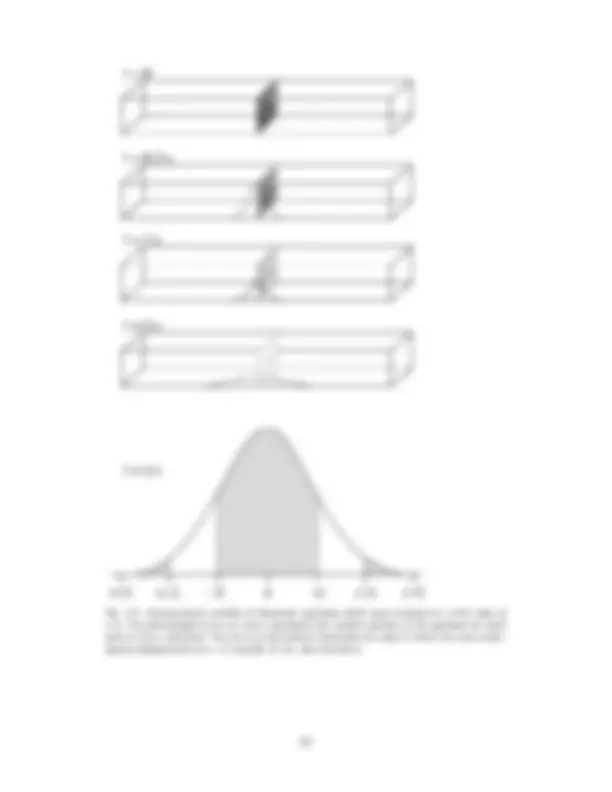


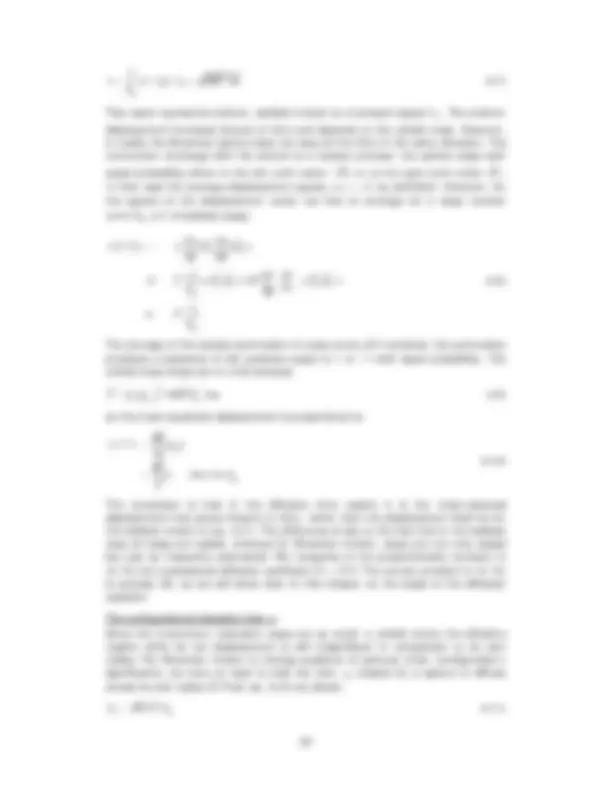



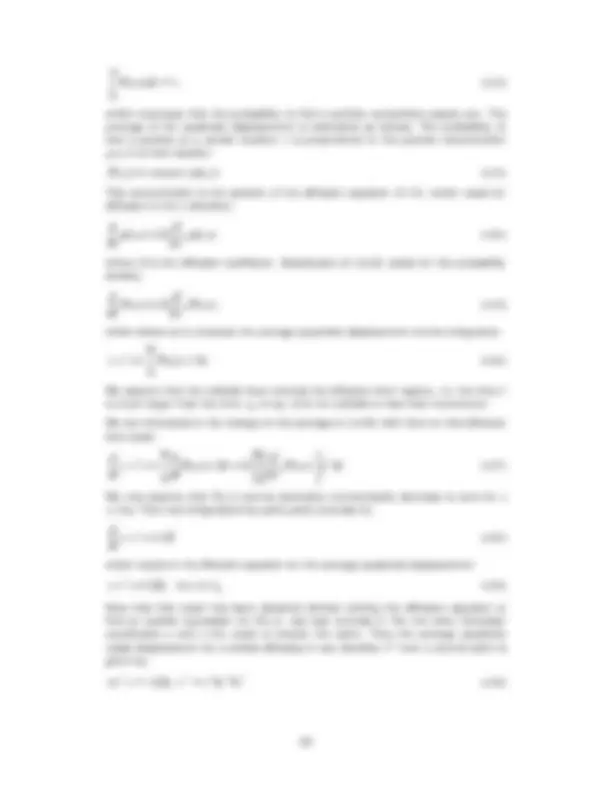



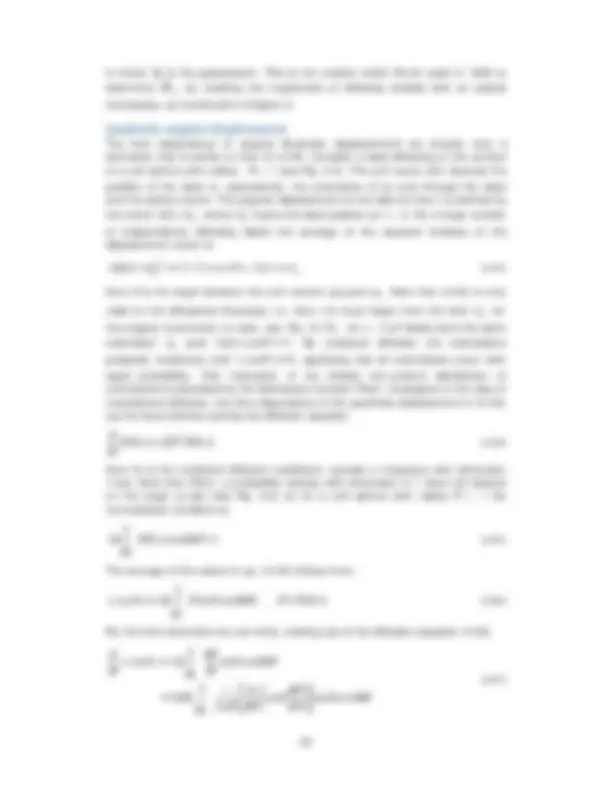






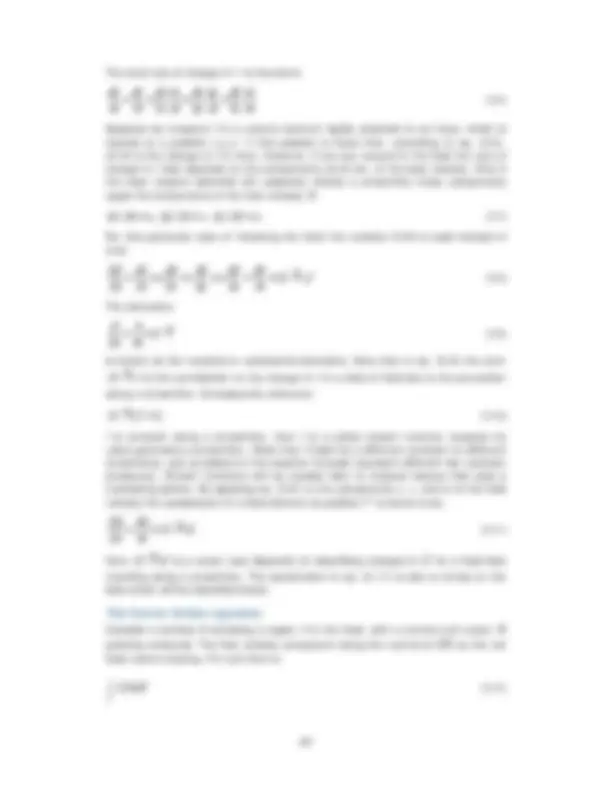

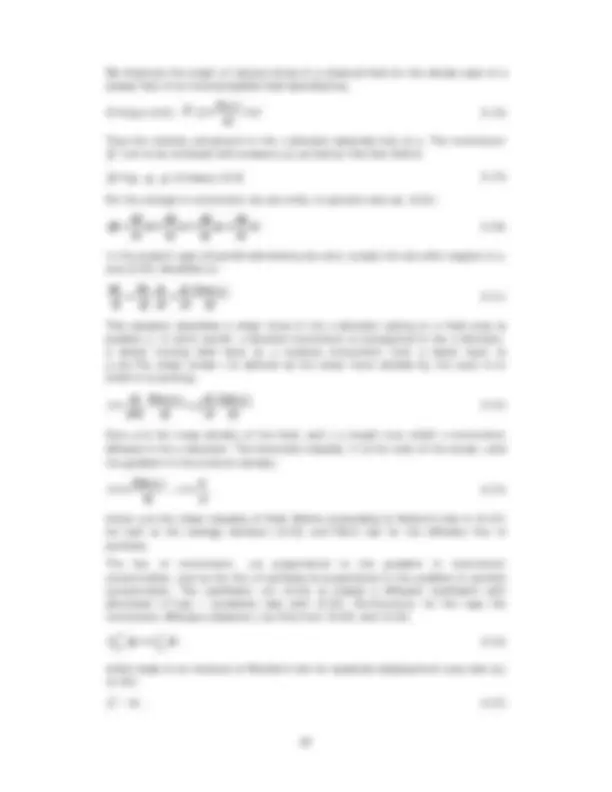
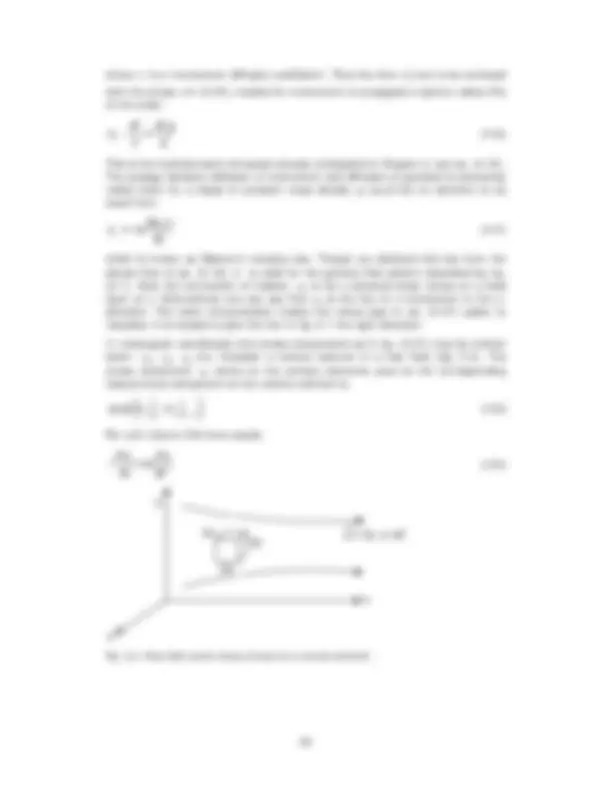





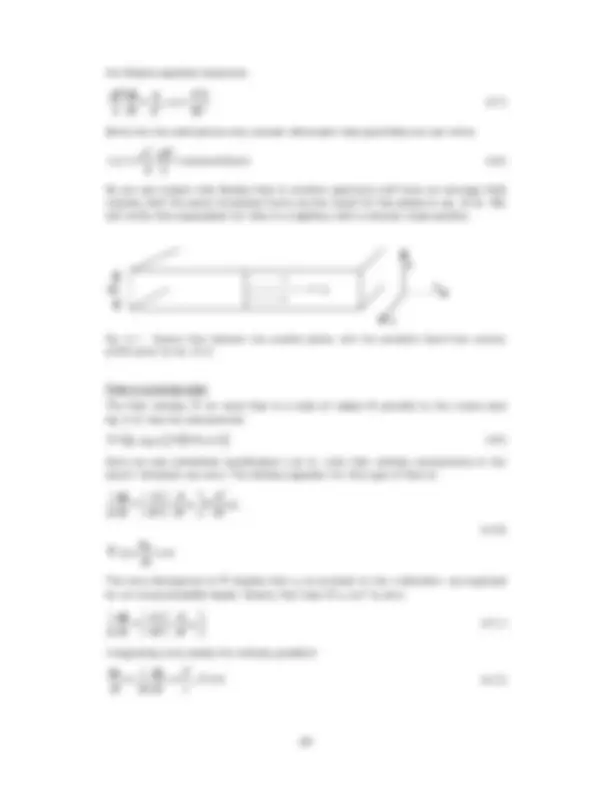

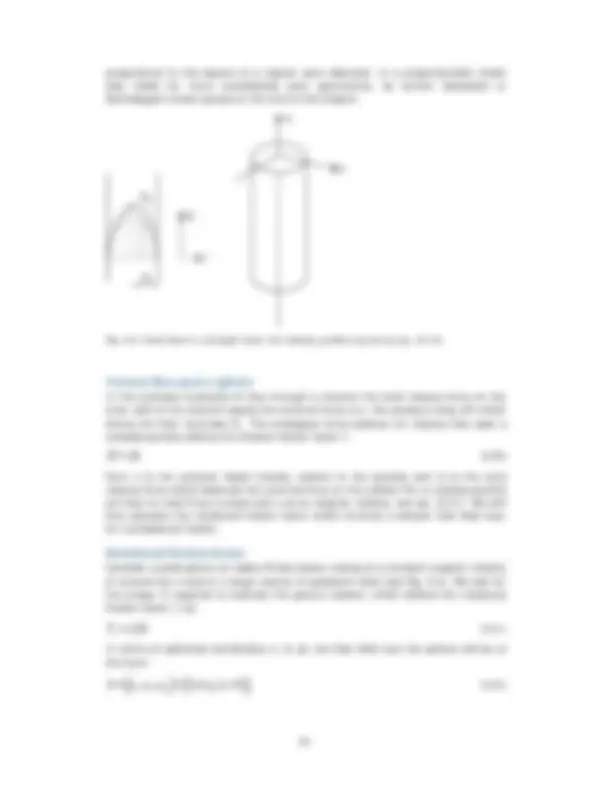



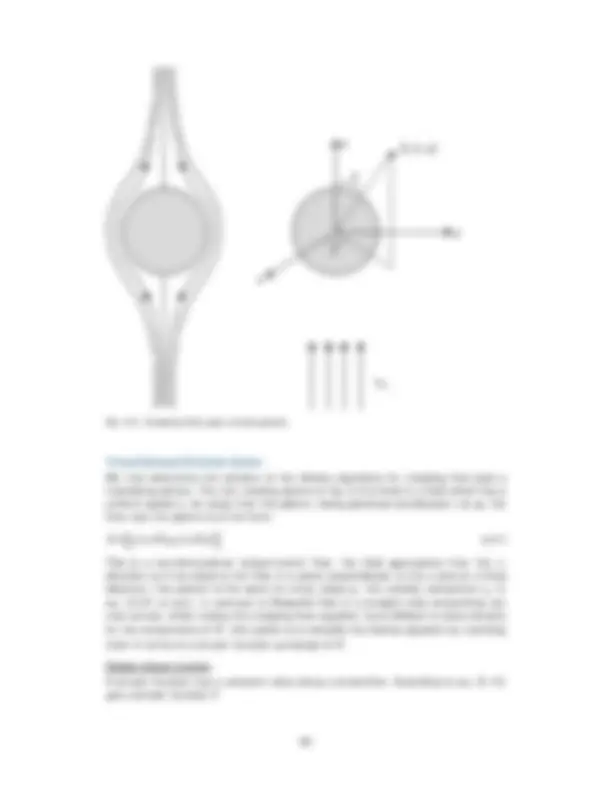
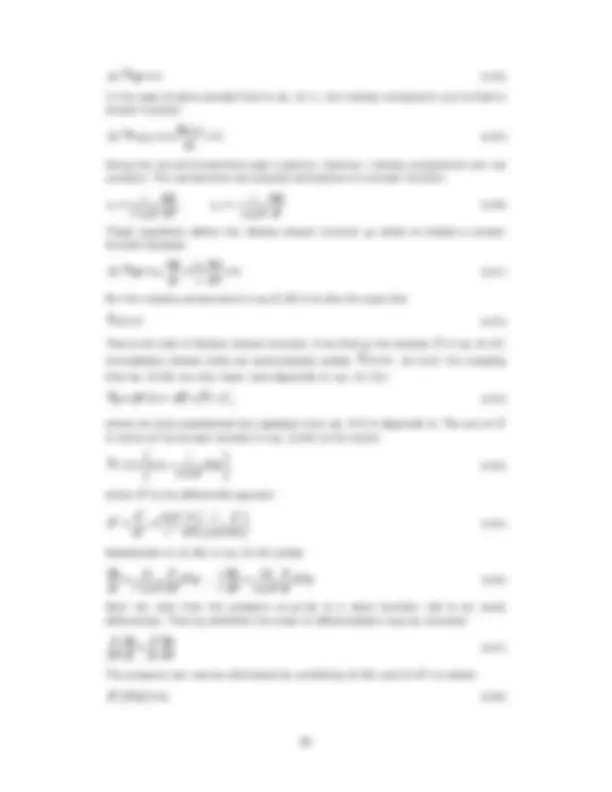






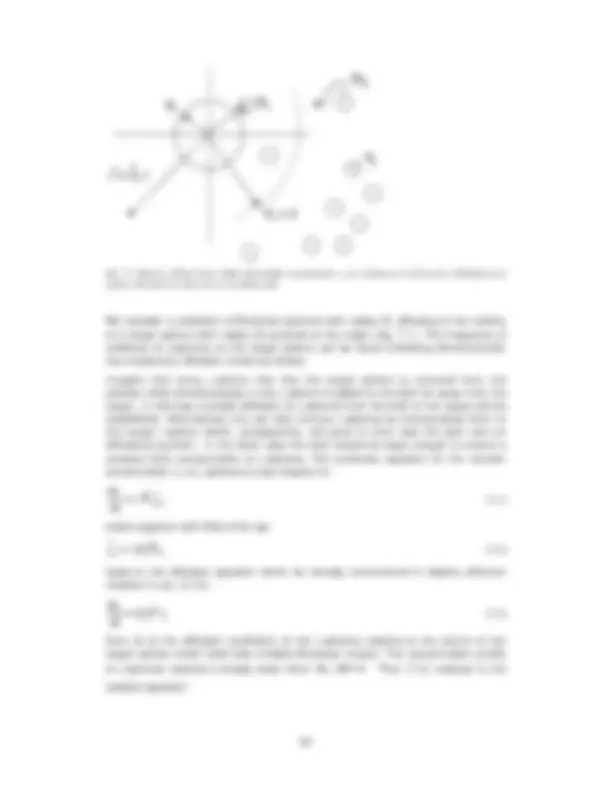

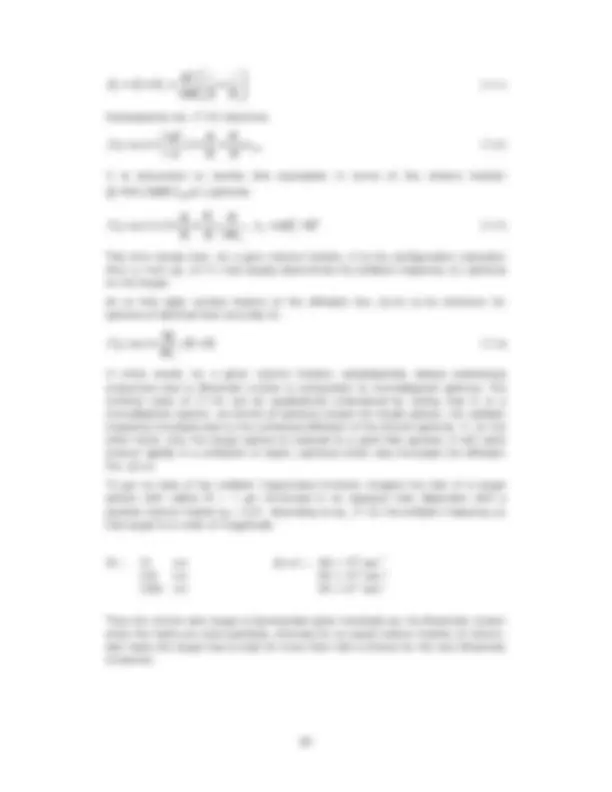

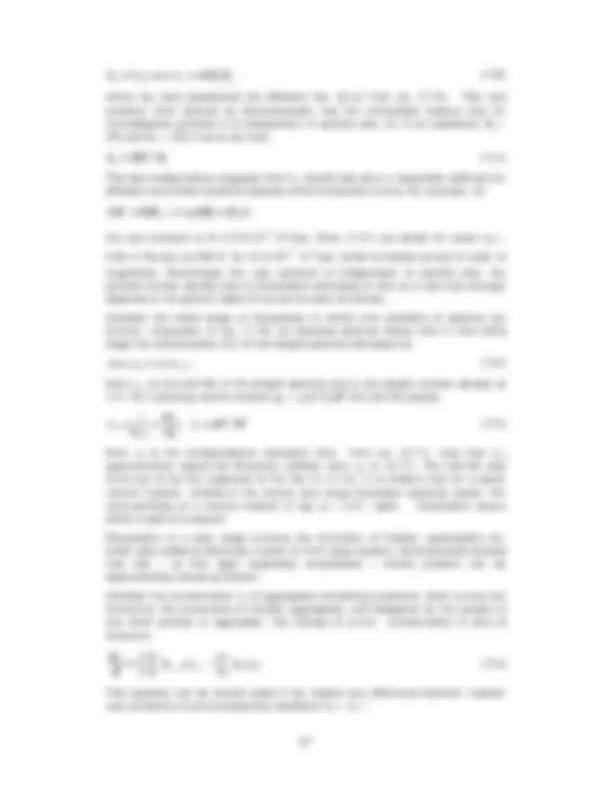
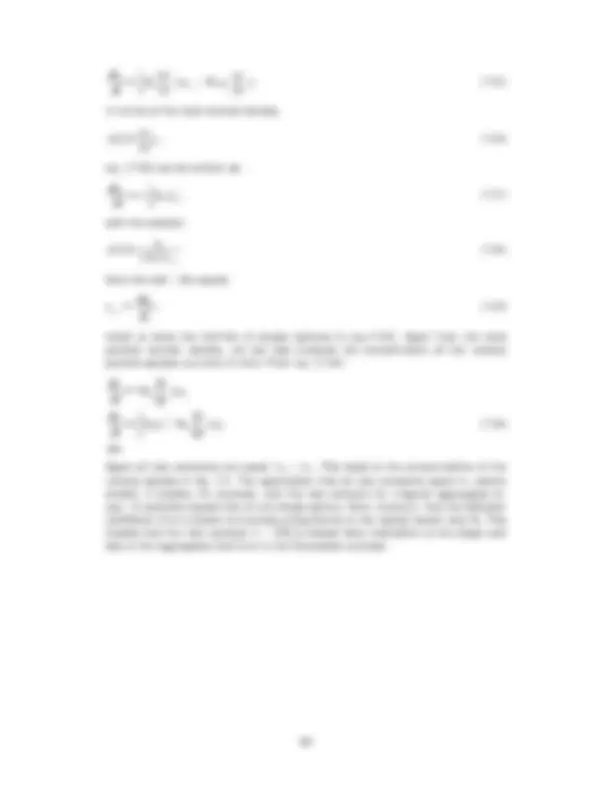
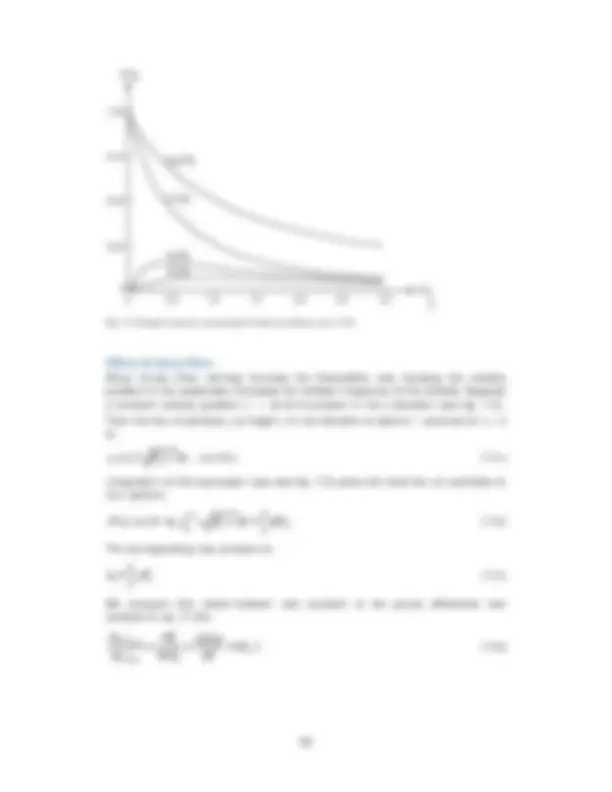
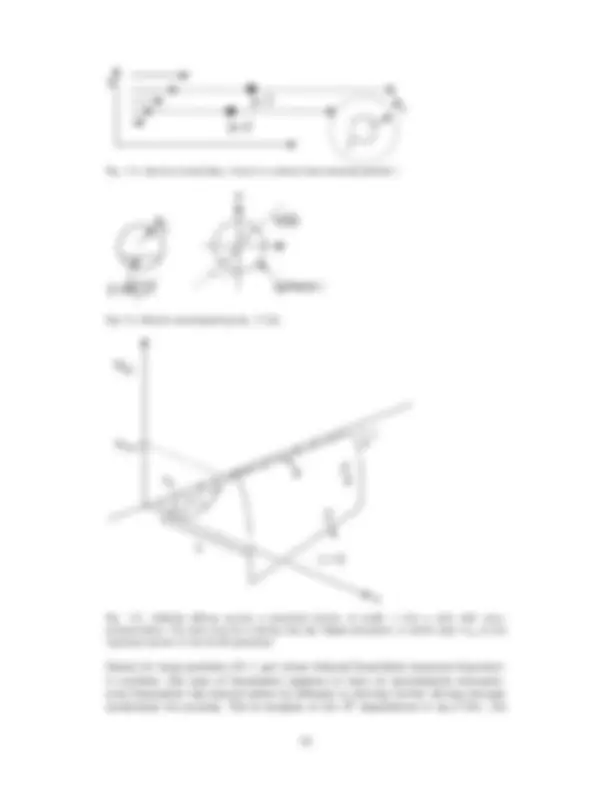
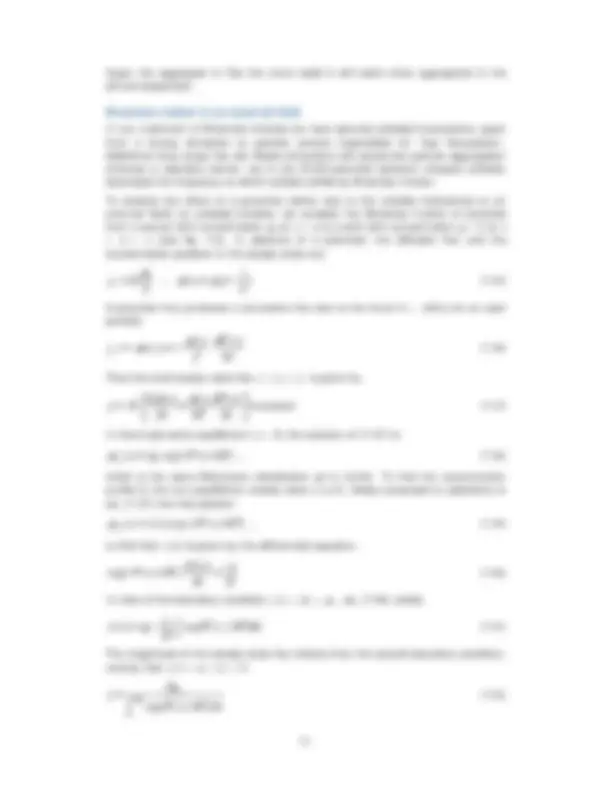
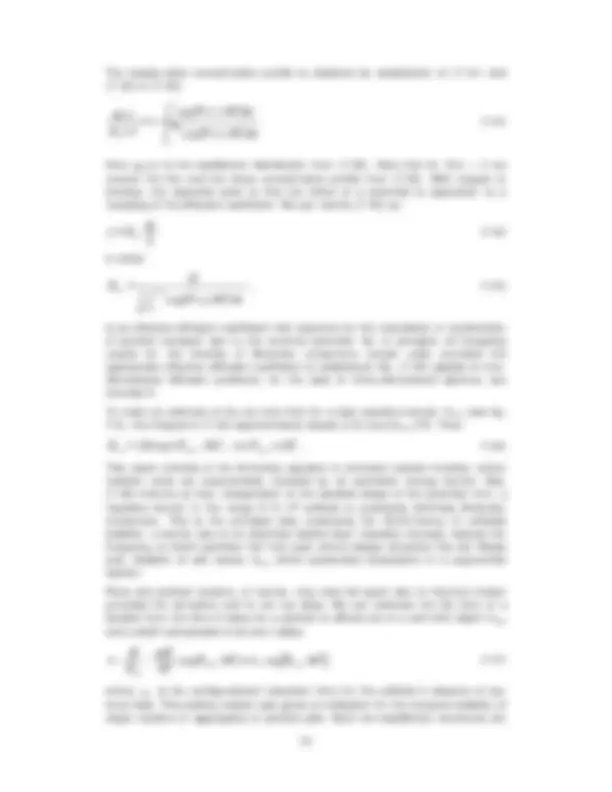



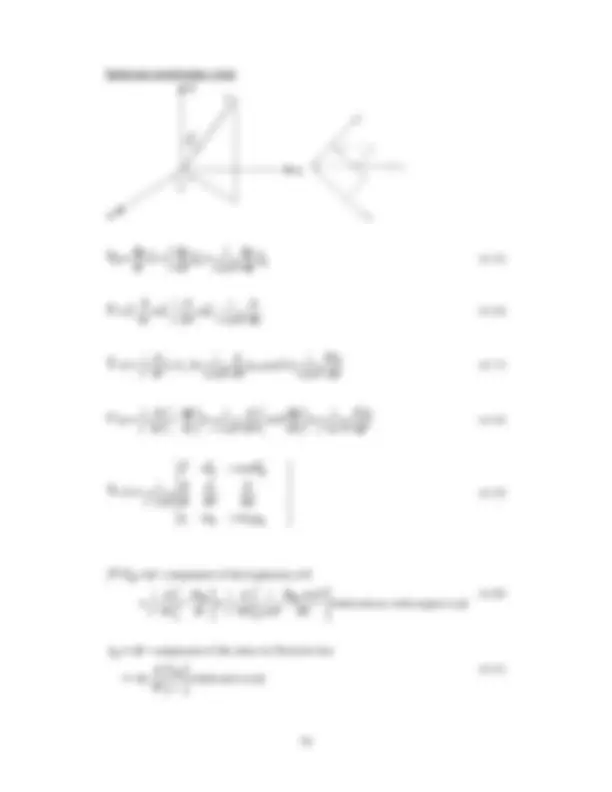
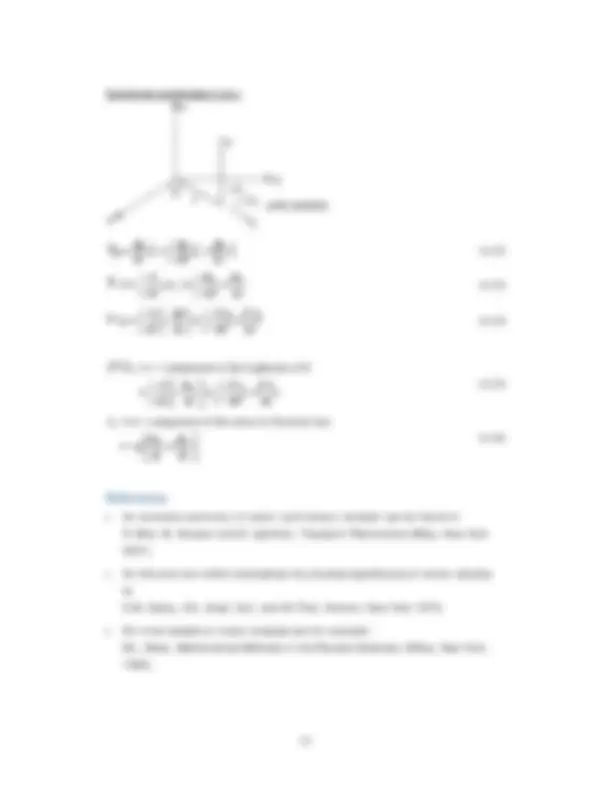


Study with the several resources on Docsity

Earn points by helping other students or get them with a premium plan


Prepare for your exams
Study with the several resources on Docsity

Earn points to download
Earn points by helping other students or get them with a premium plan
Community
Ask the community for help and clear up your study doubts
Discover the best universities in your country according to Docsity users
Free resources
Download our free guides on studying techniques, anxiety management strategies, and thesis advice from Docsity tutors
The discovery of Brownian motion, the continuity equation and Fick’s laws, Brownian motion, Stokes flow, Brownian encounters are subtopics of this lecture
Typology: Lecture notes
1 / 78

This page cannot be seen from the preview
Don't miss anything!







































































- Diffusion to a spherical target - Diffusional growth
Preface
These lecture notes form a primer to the study of Brownian motion by colloidal particles. The main theme is the Stokes-Einstein diffusion coefficient for a single colloidal sphere, freely diffusing in a viscous (Newtonian) fluid. These notes certainly do not form an exhaustive review of Brownian motion: main topics of current research such as effects of concentration or confinement are not addressed. The various references in theses notes provide access to ample literature on many more aspects of Brownian motion.
The author is very grateful to Marina Uit de Bulten for her skill (and patience) in the preparation of these notes, and to Ingrid van Rooijen and Jan den Boesterd for figures and photography. Prof. G. Koenderink and Prof. A. Vrij are acknowledged for many enlightening discussions on Brownian motion. Dr. K. Planken and Drs. B. Kuipers are thanked for careful proof reading; any remaining errors or mistakes are, of course, the author’s responsibility.
Brownian motion also comprises the rotational diffusion of particles, which is of importance to understand the response of colloids or molecules to external fields. The alignment of a magnetic or electric dipole moment of particles by an external field is counteracted by rotational Brownian motion which tends to randomize particle orientations, just as translational diffusion randomizes particle positions. The rotational diffusion coefficient Drot has the same form as the translational coefficient, be it with a different friction factor:
r
The rotational Stokes friction fr , incidentally, is easier to derive than the translational friction factor f (see chapter 6) so there is every reason to include rotational diffusion in an introductory text.
The outline of these lecture notes is as follows. The two main topics underlying Brownian motion in a liquid are thermal diffusion and hydrodynamics which eventually appear in the diffusion coefficients (1.3) and (1.4) as, respectively, the thermal energy kT and the Stokes friction factor. The first topic rests on the general diffusion equation which is, among other things, explained in chapter 3, and applied in chapter 4 to find the quadratic displacement of Brownian particles in time. This finding is still independent of the medium in which Brownian motion takes place. Since we are interested in colloids in a liquid phase, we address in chapter 5 the second main topic, namely hydrodynamics based on the Stokes equation for viscous flow. This equation is solved in chapter 6 to obtain the friction factors for translating and rotating spheres. The now completed Stokes-Einstein diffusion coefficient is applied in chapter 7 to processes such as colloidal aggregation and diffusional growth, the kinetics of which is determined by the Brownian motion of spherical particles.
An introduction to Brownian motion would be incomplete without any attention for the historical significance of its relation in eqs. (1.3) and (1.4) to the Boltzmann constant k. Therefore we first situate in chapter 2 Brownian motion in its historical context.
2 The discovery of Brownian motion
Diffusion of colloids ( i.e. particles with at least one dimension in the range 1- nm) is often referred to as Brownian motion, and colloids are also called Brownian particles. There is no principal distinction between diffusion and Brownian motion: both denote the same thermal motion, be it of a molecule or a colloid. The adjective ‘Brownian’ for colloids has nevertheless stuck, for good reasons because Robert Brown’s discovery ultimately became a corner stone of colloid science as we know it today. The account given below is certainly not exhaustive, but outlines some aspects of a fascinating history behind the Stokes-Einstein diffusion coefficient in which physics and chemistry came to terms with the concept of molecules in thermal motion.
Fig. 2.1. Brown used a microscope of this type for his study of Brownian motion. This microscopic has only one lens in the form of a small glass grain.(Courtesy Dr. J. Deiman, Utrecht University Museum, photograph J. den Boesterd).
the startling conclusion that small, dead pieces of matter spontaneously move in a liquid.
This conclusion was controversial for many years. Especially the spontaneity of the particle motion was contested in view of factors such as mechanical vibrations, solvent evaporation, and liquid convections, which could cause the observed motion of suspended particles. Such objections are not unreasonable; dust particles are seen to whirl around in sunlight due to airconvection, and even minute temperature gradients set up liquid flows in dispersions.
Nevertheless, an experiment by the author with the microscope in Fig. 2.1 using an
Brown indeed must have been able to observe Brownian motion. The irregular, diffusive movements of individual latex particles can be distinguished under the microscope of fig. 2.1, be it with some difficulty, from convective motions due to liquid flow, in which particles jointly move in the same direction. Such an experiment, of course, not only employs our modern, monodisperse latex particles in a clean solution, but is certainly also guided by what we expect to see. An unprejudiced 19 th^ century observer trying to repeat Brown’s experiments must, apart from external disturbances, have been easily confused by the complex image of moving and stagnant objects (dust, bacteria, cells, colloids of various size and shape etc.) observed in a drop of sap or water under a microscope. It is very difficult to interpret – or sometimes even to put into words – observations without sufficient guidance by expectations or theory.
This guidance developed slowly: it took nearly fifty years until Brown's observations were linked to thermal motion. The concept of molecules in thermal motion was central to the kinetic theory of gases that was developed in the 19 th^ century. However, making a connection with Brownian motion in a liquid was anything but obvious. Christian Wiener (1826-1896) who observed Brownian motion in what we now call a colloidal silica sol, made in 1863 a first attempt to relate it to inherent fluctuations of the suspending fluid. It was, however, the Belgian Jesuit Delsaux ( - ) who stated in 1877 for the first time explicitly that Brownian motion results "from the interior dynamic state that the mechanical theory of heat attributes to liquids". He also notes that the Brownian motion is a remarkable confirmation of this mechanical theory. This confirmation remained qualitative, if not speculative, until statistical thermodynamics had sufficiently developed, and until it was clearly apprehended that large particles (colloids) obey the same statistical laws as molecules. This realisation was a turning point in a long-standing controversy on the status of atoms and molecules, as will be explained below.
Colloids are molecules
Proton, neutrons and electrons unite to form the atoms of the Periodic System. These atoms built molecules by covalent or ionic bonds and these molecules in turn assemble to form solids or liquids. We take this hierarchy for granted, though this certainly does not imply that the various steps in the hierarchy are easy to understand. On the contrary: why, for example, molecules form liquids and how liquids can be described in terms of molecular interactions are technically very difficult, only partly solved problems. However, we usually do not question the validity of the strategy itself, namely to explain matter in terms of its constituent
molecules. Nevertheless, even as late as 1900, the status and even the very existence of atoms and molecules were fiercely debated.
Chemists were drawing schematic diagrams, the forerunners of our chemical formulae and stoichiometric equations, at least since Dalton (1766-1844). For a critical 19th^ century student, however, the physical evidence that such chemical symbols might represent 'real' particles was anything but convincing. The student could point in the first place to the confusion about the nature of such particles. Were they indivisible atoms in the strict sense of the word? (‘atom’ derives from the
And was there only one type of atom, for example hydrogen as postulated by Prout (1785-1850), or could there be a whole family of ‘chemical’ atoms as advocated by Dalton? Our 19th^ century student could also point to the absence of any compelling evidence on the size of atoms or molecules, and that no one knew how many molecules, if they existed, went in one mole of substance.
One of the first credible estimates of molecular size was made by Loschmidt (1821-
Statistical thermodynamics, in contrast, is much less without engagement. It explains the Second law of thermodynamics by applying the laws of mechanics and the theory of probability to a collection of discrete particles in thermal motion. Ludwig Boltzmann (1844-1906), a founder of statistical mechanics, proposed in
S = k ln , (2.1)
microscopic states that correspond to a certain macroscopic state with fixed total energy. Further k , the Boltzmann constant, is the ratio of the molar gas constant Rg to Avogadro's number:
Av
and has the dimension of entropy. Boltzmann's entropy formula has an important consequence for the distribution of an assembly of N particles in an isolated system. According to the Second law, the entropy in an isolated system must increase until equilibrium, that is the state with maximal entropy, is reached. For the N particles the maximum of the entropy function
One easily verifies (exercise 2) that for oxygen molecules lg is several kilometers, whereas colloidal spheres may adopt equilibrium profiles of only several cm or less. Since such spheres can be observed with an optical microscope, Perrin (fig. 2.3) was able to directly count the number densities predicted by eq (2.8). He determined the mass of his colloidal spheres from measurements of their Stokes
as a function of height x at a given temperature, the Bolzmann constant k remains the only unknown. Perrin thus determined experimentally k , and found in this way a reasonable value for Avogadro's number.
Perrin initiated the use of 'well-defined colloids' to study molecular statistics on a spatial scale which is accessible to an optical microscope. In colloid science this 'upscaling' is still an important strategy, and one is still wrestling with the problem that also Perrin had to face: colloidal particles always have a certain distribution in shape and mass (they are 'polydisperse') whereas atoms are monodisperse – if one disregards isotopes. The distribution in eq. (2.8), however, presupposes particles with identical mass m. Perrin used fairly monodisperse latex spheres, obtained from laborious fractionation procedures on natural latex ('gamboge') solution: by repeated sedimentation a few hundred milligrams of spheres were obtained from one kilo of rubber. Nowadays well-defined colloids can be prepared by precipitation or polymerisation of insoluble substances in a solution.
The equivalence between colloids and molecules also lead Perrin to another microscopic determination of Avogadro's number. Einstein was motivated to develop arguments to support the existence of molecules and the applicability of statistical thermodynamics. In his annus mirabilis 1905 (in which he also first published on special relativity and the photo-electric effect) Einstein reported equations for the diffusion of a particle in a liquid. They are the expression for the diffusion coefficient in eq. (1.1) and the relation:
stating that a particle with diffusion coefficient D diffuses in such a way that the average quadratic displacement <r^2 > is proportional to time t. Einstein noted - allegedly unaware of earlier literature on Brown's observations –that his work could explain Brownian motion as an observable manifestation of particles in thermal motion. Perrin verified eq. (2.10) by measuring the displacements of his colloidal latex spheres (see Fig. 4.1) under a microscope and, via the Stokes-Einstein eq. (1.1), again found a reasonable value for Avogadro's number. Perrin's experiments made quite an impact as they quantitatively confirmed that through a microscope one indeed directly observes the 'heat motion' of large molecules. Even a sceptic such as Wilhelm Ostwald accepted eventually the reality of molecules, being convinced by Perrin's experiments.
Fig. 2.3. Perrin’s microscopic image of the sedimentation-diffusion equilibrium of resin spheres (diameter one micron) in water. Source: F. Randriamasy, Revue du Palais de la Découverte 20, no. 197, 18-27 (1992).
G. Holton and S.G. Brush, Physics, the human adventure , (New Brunswick, Rutgers University Press, 2001).
A standard work on the development of the kinetic theory: S.G. Brush, The kind of motion we call heat. A history of the kinetic theory of gases in the 19th^ century (Amsterdam, North-Holland, 1994).
The only biography of Brown: D.J. Mabberley , Jupiter Botanicus; Robert Brown of the British Museum (Braunschweig: Cramer, 1985).
Brown reported his observations in: R. Brown, A Brief Account of Microscopical Observations Made in the Months of June, July, and August 1827, on the Particles contained in the Pollen of Plants; and on the General Existence of active Molecules in Organic and Inorganic Bodies, Edinburgh New Philosophical Journal 5 (1828) 358-371; The Philosophical Magazine and Annals of Philosophy Series 2, 4 (1829) 161-173. R. Brown, Additional Remarks on Active Molecules, Edinburgh New Philosophical Journal 8 (1829) 314-319; The Philosophical Magazine and Annals of Philosophy Series 2, 6 (1829) 161-166.
The story of Brown’s microscope can be found in: B.J. Ford, Single Lens: The story of the simple microscop e (London: Heinemann, 1985).
A useful reference on the history of Brownian motion: M. Kerker, Brownian Movement and Molecular Reality Prior to 1900, Journal of Chemical Education 51 (1974) 764-768.
For Einsteins contribution to the theory of Brownian motion see: A. Einstein, Über die von der molekularkinetischen Theorie der Wärme geforderte Bewegung von in ruhenden Flüssigkeiten suspendierten Teilchen , Ann. der Physik 17 (1905) 549-560.
For a recent biography of Boltzman see: D. Lindley, Boltzmann’s Atom (New York: The Free Press, 2001).
Perrin’s book is an example of engaging and lucid science writing. Nye presents a very well informed and readable biography: J. Perrin, Atoms (London: Constable & Company, 1916) Transl. D.L. Hamminck M.J. Nye, Molecular Reality: A perspective on the scientific work of Jean Perrin (New York: Elsevier, 1972).
For the contributions of Wiener and Delsaulx see: Chr. Wiener, Erklärung des atomistischen Wesens des tropfbar-flüssigen Körperzuständes, und Bestätigung desselben durch die sogenannten Molecularbewegungen , Annalen der Physik und Chemie 118 (1863) 97-94. J. Delsaulx, Thermo-dynamic Origin of the Brownian Motion, The Monthly Microscopical Journal 18 (1877) 1-7.
The estimate of molecular size by Loschmidt is reported in J. Loschmidt , Zur Grösse der Luftmoleküle, Sitzungsberichte der Kaiserlichen Akademie der Wissenschaften in Wien 52 (1865) 395-407. For an annotated translation (unfortunately not flawless) see: W.W. Porterfield and W. Kruse,
Loschmidt and the Discovery of the Small , J. Chem. Education 72 (1995) 870-
Suppose, without any loss of generality, that we consider the flow of water such that f is the local water concentration. Then at any time t the total amount of water in volume V is the volume integral:
V
f dV ,^ (3.2)
and the rate at which this total changes is:
V V
(^)
moved under the integral sign. Conservation of water requires that
S V
According to the divergence theorem (see Appendix A) the surface integral also equals:
S V
j^ ^ n dS^ ^ j dV
The physical significance of this theorem for water flow is as follows. The
is the net water flow, per unit volume, out of a volume element.
This volume element has a positive divergence. The outgoing water enters another volume element contributing to an opposite, negative divergence. Thus in the volume-integral in eq. (3.5) all divergences cancel, except for the water leaving or entering the region V through its surface. The latter water flow is quantified by the surface integral in eq. (3.5). From eqs. (3.4) and (3.5) it follows that:
V
(^)
The fact that the volume integral in eq. (3.6) is zero does not necessarily imply a zero integrand. One could imagine a source inside V (integrand positive) which is exactly compensated by a sink (integrand negative). However, we already excluded the existence of sources and sinks inside V so the quantity f is conserved everywhere in V. Under this assumption the integrand is always zero:
This is the continuity equation, a basic equation both in diffusion (chapter 4) and hydro-dynamics (chapter 5), with no other physical meaning than that f is a
conserved quantity. Let us apply this result to the mass flux j u
of a fluid with
velocity u
. (^) u 0
to find for a fluid which has everywhere the same constant mass density that:
This is the continuity equation for an incompressible fluid. It is an important
constraint on the velocity field u
around a colloid in a suspension, because the solvent usually is an incompressible liquid. Eq. (3.9) describes a steady state which by definition means that the distribution of the quantity f in (3.7) does not change in time. In a stationary flow, for example, of water in Fig. 3.1, water molecules enter and leave volume V at the same rate such that the water concentration f
the steady state automatically satisfies:
In the steady state the divergence of the flux is zero, which should not be confused with the equilibrium state in which the flux itself is zero. The fluxes in the steady state are due to irreversible processes (diffusion, viscous flow), which produce entropy, whereas in thermodynamic equilibrium (for example the Boltzmann distribution from Chapter 2) no entropy producing transport processes can occur. One can also view equilibrium as the limiting case of a steady state in which all fluxes vanish. The concept of a steady or stationary state will be applied repeatedly in later chapters (exercise 3).
Constitutive equations; Fick’s laws
The conservation eq. (3.7) has two unknowns so to find the quantity f a second
is needed. Such a relation is the constitutive
equation which specifies the transport problem and identifies the gradient that is responsible for the existence of the flux j. An example is a concentration gradient of colloids which drives collective diffusion. The concept of a flux driven by a gradient of an intensive variable is quite general:
Flux of = transport property x gradient in
particles diffusivity particle density (Fick)
charge conductivity potential (Ohm)
liquid permeability pressure (Darcy)
momentum viscosity momentum density (Newton)
energy heat conductivity temperature (Fourier)
The momentum flux will be dealt with later in Chapter 5. Liquid flow according to Darcy’s law is briefly addressed in Chapter 6. Below we will formulate Fick’s diffusion laws.
Brownian motion is a random motion: colloids diffuse in all directions with equal probability. Thus there is no net displacement of particles in a homogeneous distribution with a constant concentration of colloids. A concentration gradient, however, induces a collective displacement of colloids, also referred to as collective